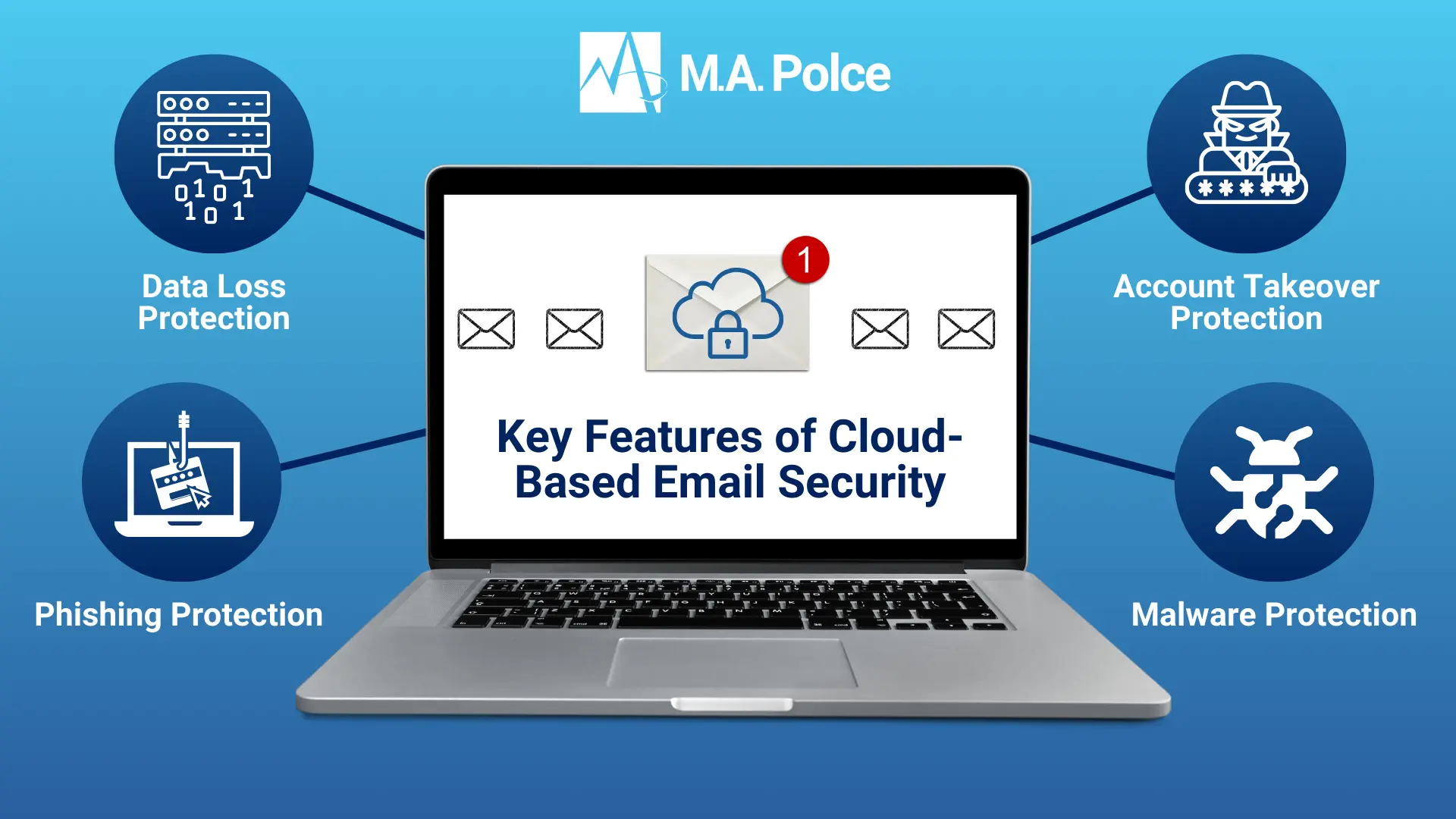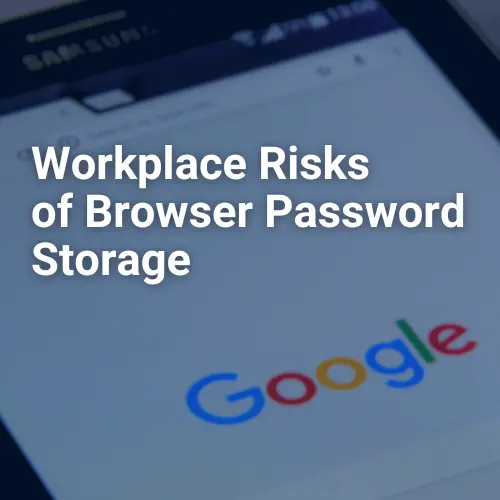The varieties of cyberattacks seem to grow every day, and while small and medium-sized businesses are hit on multiple fronts, email continues to be a primary target. What’s more, phishing tactics have grown more sophisticated, rendering traditional approaches to email security, such as secure email gateways (SEGs), less effective.
To keep up with modern threats, businesses need integrated cloud email security (ICES). Offering cybersecurity services to small and mid-sized organizations across various disciplines, M.A. Polce delivers cloud security solutions tailored to your needs and goals. Here, the team explains more about ICES and its benefits.
What Is Integrated Cloud Email Security?
99% of cybersecurity leaders are concerned about their organization’s email security, and for good reason. Although one of the oldest cyberattacks, phishing continues to be a major threat to businesses. In 2022 alone, 92% of organizations were victims of a successful phishing attack.
Many businesses have a cloud-based infrastructure and need a security solution to keep up with the onslaught of phishing attempts and other cybersecurity concerns administered via email. Integrated cloud email security marries the capabilities of cloud technology with the techniques necessary for effective email security.
What is ICES? The solution utilizes innovative technologies to protect against several email-based attacks. These technologies monitor inboxes for suspicious emails, especially those that evade traditional email security, such as business email compromise (BEC) or vendor email compromise (VEC).
Other benefits of cloud email security include:
- Integrates easily with cloud email services: ICES seamlessly integrates with your existing cloud email services without diminishing availability or integrity.
- Offers multiple layers of protection: ICES uses several layers of security to detect and stop advanced email threats.
- Operates in real-time: ICES actively monitors and assesses inboxes and traffic to identify and respond to threats as they appear.
How Does Integrated Cloud Email Security Work?
Integrated cloud email security works by combining the power of multiple technologies. Together, these technologies enable more comprehensive email security that continuously improves as it detects and interprets threats.
For example, machine learning helps ICES understand the context of an email threat as it monitors inboxes and traffic. It learns how actors communicate these messages and their geographical location. Through natural language processing (NLP), ICES learn to recognize the terminology common in email threats. It then flags this language to better identify threats in future instances.
Technologies like these empower more holistic email security.
The following are just some of the key features of cloud-based email security:
- Data loss protection: ICES protects sensitive information from leaking to unauthorized parties to ensure businesses maintain regulatory compliance.
- Phishing protection: ICES delivers the capabilities necessary to defend even the most complex phishing attacks.
- Malware protection: Using a technique called sandboxing, ICES can identify malware that may have built-in properties to make its detection harder.
- Account takeover protection: As remote work becomes more common, so have account takeovers. ICES searches for signs of account takeover and protects data when unusual behavior is detected.
From real-time threat detection to seamless integration with cloud email services, the benefits of ICES for email security are many. For the IT department, these advantages alone make ICES worth the investment. However, executives will also appreciate that ICES maintains the flexibility to scale resources as your business grows. This makes ICES a cost-effective solution, especially compared to the cost of a phishing attack.
Challenges and Limitations of Integrated Cloud Email Security
No email security solution is perfect. Businesses will encounter challenges whether they choose ICES or traditional email security. With ICES, many of these problems stem from the cloud provider the organization partners with for email security.
For instance, some providers offer stricter models of service, meaning pricing for custom terms can be complicated. Additionally, organizations may be limited in their configuration options. It’s for this reason you should always thoroughly read through the service-level agreement to ensure the cloud provider can meet your needs.
Since these challenges boil down to the cloud provider, the best solution is carefully researching each to determine which offers the best security services. Consider their availability, reputation, and willingness to tailor services. Additionally, verify the provider understands the various regulations of different industries to ensure your organization stays compliant.
Best Practices for Integrated Cloud Email Security
If you decide ICES is best for your organization, keep the following tips in mind to ensure you maintain comprehensive email security:
- Identify the types of threats your business encounters most often to prioritize security concerns
- Figure out the detection signals most valuable for your ICES solution
- Strengthen access controls with multi-factor authentication (MFA) and similar techniques
- Develop a plan for recovering from successful phishing attacks
- Assess ICES for efficiency (i.e., is it helping internal security teams streamline tasks?)
- Utilize metrics to evaluate the types and numbers of attacks to determine how to allocate resources better
- Consider how to address graymail with ICES
Ultimately, ICES is most effective with buy-in from employees. Threats can slip through the cracks, but when employees are cognizant of the language and tactics malicious actors use, their common sense will protect the company from a cyberattack. Training sessions are a great resource for increasing your employees’ awareness of phishing and other email threats.
What Is Mimecast?
Organizations have various options for ICES tools, but M.A. Polce finds Mimecast to be the most reliable and utilizes it to help clients maintain integrated cloud email security. Consider the following benefits of Mimecast:
- Cloud-based architecture: Prevents organizations from needing on-premises hardware or software by enabling them to offload email security and management to the cloud.
- Centralized email management: Provides a centralized control panel for various tasks to give administrators more supervision over the email environment.
- Data leak prevention (DLP): Protects against the leaking of sensitive data via email and automatically detects and blocks emails with such data to ensure regulatory compliance.
- Email continuity: Offers a cloud-based email archiving and backup solution to ensure users have access to their email accounts during outages or downtime.
- Targeted threat protection: Uses advanced threat intelligence and machine learning to defend against sophisticated attacks like spear-phishing and impersonation.
- URL/attachment protection: Scans attachments and URLs in emails for real-time protection against potentially malicious content.
- Reporting and analytics: Enables organizations to improve email security strategies through detailed reporting and analytics tools that monitor performance, analyze trends, and track threats.
- Compliance and e-discovery: Ensures organizations maintain compliance through archiving and e-discovery capabilities, which help retrieve and retain emails for legal and regulatory needs.
- User awareness training: Provides features for educating users to recognize email threats and prevent security incidents, which ultimately improves overall security posture.
- Integration with existing infrastructure: Integrates seamlessly with email platforms the organization already uses, such as Microsoft Exchange, Office 365, and Google Workspace, for a smooth transition to cloud-based email security.
Cloud Integrated Email Security from M.A. Polce
The need for ICES will only grow in the coming years. According to Forbes, the number of phishing attacks in 2022 was double that of 2021, accumulating to a more than $50,000,000 loss in the United States. As the threat landscape continues to evolve, the demand for reliable solutions intensifies, especially for small and medium-sized organizations grappling with safeguarding sensitive data.
At M.A. Polce, organizations like yours find a partner up to the task. Our commitment goes beyond providing cutting-edge technology; we become an extension of your team, understanding your business intricacies and the legal and regulatory nuances of your industry.
With a comprehensive suite of services backed by round-the-clock support, we empower organizations to navigate the complexities of a layered security approach. Contact us today to have a conversation about your cybersecurity service needs.
Sources:
https://www.hackread.com/secure-email-gateway-integrated-cloud-email-security-seg-ices/
https://www.forbes.com/advisor/business/phishing-statistics/




